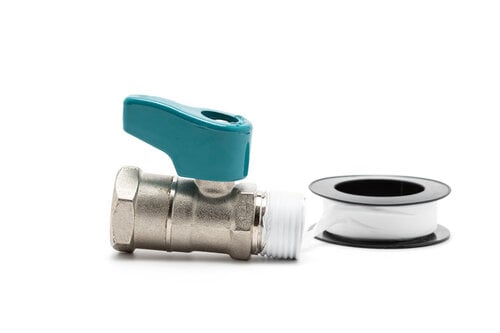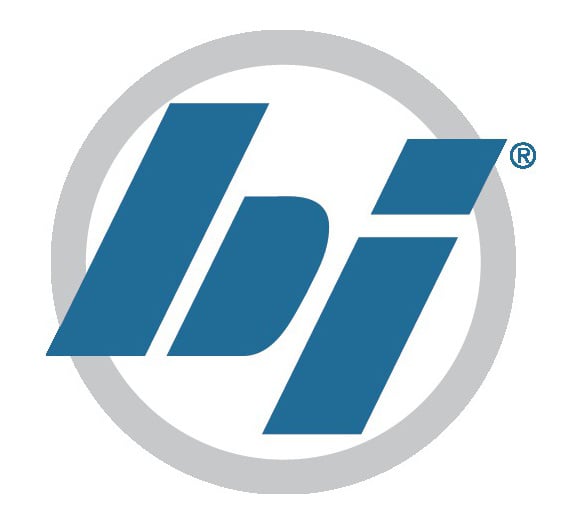Properly sealing a hydraulic fitting is crucial during assembly. Over-tightening can damage the seal, stripping threads or crushing an O-ring, causing the fitting to crack.
In 2019, a mechanic replaced a hydraulic line for the bucket on a large end loader. When installing the new hose, he noticed a leak near one of the fittings, so he retightened it-- but the leak persisted. He told the operator to shut down the machine. Almost immediately, the hose blew-- hitting the mechanic in the face as he was inspecting the leak. He was thrown backward by the high-pressure hydraulic hose and fitting, resulting in a concussion and permanent vision loss from hydraulic fluid in his eyes. The threads of the fitting had been stripped by overtightening, causing the connection to break free. 
Where do Hydraulic Lines Leak and Why?
If there is a leak in your hydraulic line, chances are it’s the fitting and not the hose that’s leaking. Using the wrong type of hydraulic fitting, improper sealing, or incorrect installation are the primary causes of leaks. Leaks will occur if over or under-torquing the connection, if an O-ring is missing or damaged, if the hydraulic fitting seal is not aligned correctly and even worse — if the threads are damaged.
Some fitting types leak more than others, particularly if they’ve been disassembled and reassembled. A good example is retightening a JIC fitting where the threads can be stripped and cause leaks.
Primary Types of Hydraulic Fitting Styles
There are only two types of hydraulic fittings, all-metal and O-ring:
- All-metal fittings, such as a JIC 37-degree flare which has parallel threads where the seal is made by metal-to-metal contact between the male flared end and the female coned seat. There are many other types of all-metal fittings, including flareless and compression fittings.
- An O-ring hydraulic fitting, such as an O-ring boss or O-ring face seal, compresses the O-ring between the two mating halves. Typical O-ring materials are NBR, Nitrile and Buna-N.
O-rings are used throughout fluid power connections to prevent leaks in fittings, pumps, valves and cylinders. They are used in both hydraulic and pneumatic connections, for dynamic and static systems.
O-ring fittings tend to be less prone to leaks and can be reassembled without the potential of leaking. It’s best practice to replace the O-ring and lightly coat it with a compatible lubricant prior to reassembly.
However, with metal-to-metal flared fittings it’s best to replace the male fitting if you need to disassemble them.
How to Seal Hydraulic Fittings
The best methods in how to properly seal hydraulic fittings are:
- On NPT, JIC and other all-metal fittings: Loctite 5452 thread sealant helps prevent rotation and leakage on these high-pressure fittings. It seals hydraulic fittings at the mating surfaces by filling surface imperfections and scratches, withstanding pressures to 10,000 psi (690 bar) and enduring operating temperatures of -65°F (-54°C) to 300°F (149°C).
- Teflon tape can be used in certain conditions for sealing hydraulic fittings styles, primarily on NPT threads where sealing tapes create a leak-free seal.
However, if not wound properly (clockwise), the tape can introduce contamination into the system. Teflon tape should not be used to seal certain hydraulic fittings, including:
- NPTF (National Pipe Thread Fuel) which forms a secure mechanical seal by essentially crushing the entire thread form-- another good reason not to disconnect and reconnect this type of fitting. Instead, replace it during maintenance.
- JIC Fittings, due to the 37-degree cone, which creates the seal with the mating female. Teflon tape can even gum up and enter the fluid, causing contamination.
- Other fittings with a bonded washer or other metal-to-metal seal compression fittings should not use Teflon tape, except for compression to male NPT, where the NPT end is permissible for tape.
- How to seal hydraulic fittings when using O-ring boss and O-ring face seal fittings? The O-ring, of course!
There are basic principles in how to seal hydraulic fittings. In short, it’s okay to use Teflon tape on NPT threads and Loctite 5452 thread sealant on NPT or JIC fittings. However, there is no need to use any type of sealant on JIC 37-degree flare fittings and most O-ring connections.
Learn more about hydraulic maintenance here:
Sources Include:

